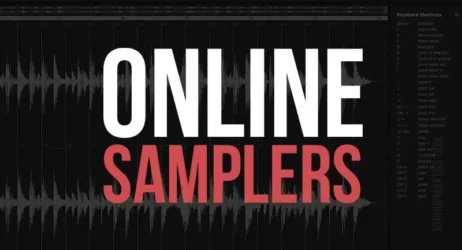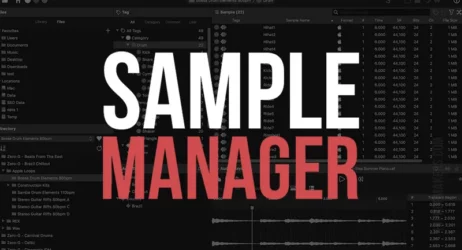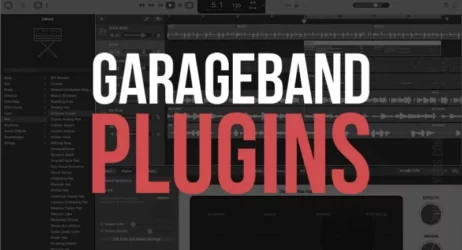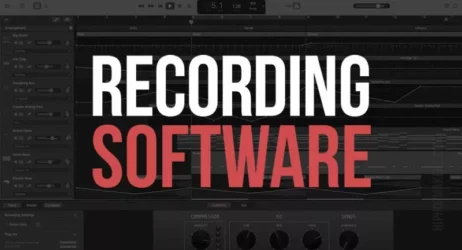This essential guide will explain what audio compression is, its uses, the different types of compression, and other common questions. So what is audio compression?
What Is Audio Compression In Music?
Audio Compression is the process of reducing variations within a recording or piece of music. This can take place during mastering, mixing, or even live performances. When we compress the audio, you turn down the high-frequency sounds and turn up the low-frequency sounds to fill in the gaps.
The following article will explore what Compression is, the types, how it can be used in audio to provide better sound quality, and much more. Keep reading!
- What is Compression in Audio
- What is Audio Compression Used For
- Why is Audio Compression Important
- Types of Audio Compression
- Compressor Settings Chart
- What is the Audio Compression Ratio
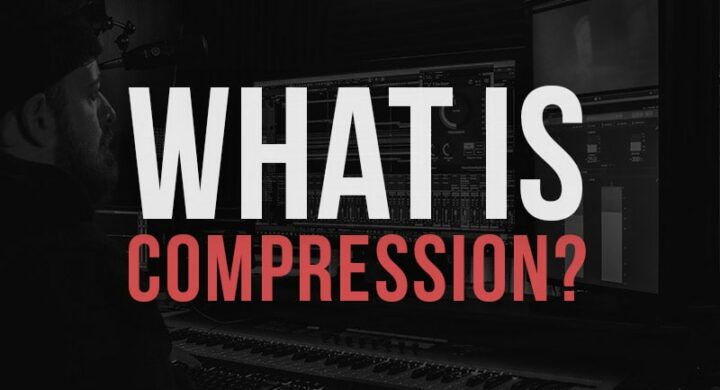
What is Compression in Audio?
Audio Compression is a process that reduces the file size of an audio file, and it does this by removing some of the sound data deemed less audible and redundant.
Some people refer to this process as “audio format conversion.” However, this term also refers to another type of audio Compression: lossy Compression. This latter process permanently removes sound data from the original file and cannot be reversed, whereas the first one (lossless) does not remove any sound data.
In simpler terms, Audio Compression is the process of reducing the volume of louder sounds. This can result in an improvement in audio quality or sometimes no sound quality change.
It is widely used to make digital audio files smaller, and it also ensures that the listener can hear quieter sounds without being overloaded with loud background noise. Compression is an essential part of audio production, and for an input signal to be transmitted with a small amount of noise, it has to be compressed.
Compression reduces the dynamic range, meaning that louder sounds are quieter and softer sounds are more audible. It can also make music sound more exciting, as it brings up quiet passages and suppresses loud ones.
Related: 45 Best Free Compressor VST Plugins
The technique involves reducing the range of frequencies in the compressed audio signal. This reduces the amount of data required to transmit the audio signal, enabling it to fit within a narrower band and through a given channel. We can increase the volume by reducing these frequencies without increasing the number of bits needed for transmission.
An audio compressor works by increasing or reducing the dynamic range between the loudest and softest parts of a signal by attenuating or amplifying those signals to minimize the difference in volume level. The desired result is a relatively constant volume level despite significant changes in signal amplitude; this results in reduced distortion and increased efficiency.
Audio Compression is essential because it reduces file size and bandwidth requirements for digital communications systems such as telephones and broadcasting. It also increases sound quality by making it easier to hear quiet sounds and less energy than louder ones.
What is Audio Compression Used For?
Audio compression is used to increase or decrease the dynamic range of an audio signal. It reduces the volume of loud sounds like explosions, for example, while amplifying too-quiet dialogue or background music.
This makes for a more balanced audio experience and prevents distortion. Moreover, it can reduce the size of an audio file by decreasing the dynamic range.
Secondly, Audio Compression is a process that reduces the dynamic range in an audio file. This helps to decrease its size and make it easier to transmit over a network connection. Likewise, it can also help create a less “noisy” recording sound, meaning a more consistent volume level throughout.
Audio Compression can be used for several purposes, including:
- To reduce the size of an audio file
- To make it easier for an audio file to be transmitted over networks
- To increase the sound quality
To conclude this, it is a technique or process to lower the dynamic range of sound. It is used to reduce the difference between the loudest and quietest sounds.
The main advantage of this technique is that it saves disk space because it reduces the size of an audio file by about 60%. Audio Compression also improves sound quality and makes it easier for non-technical users to listen and enjoy audio files.
Related: Free Online Audio Converters to Convert Audio Files
Why is Audio Compression Important?
Audio Compression reduces the amount of data so that it can be compressed into a smaller size.
This reduces the bandwidth for audio files, which in turn improves sound quality.
- This is important to decrease file size and maintain sound quality because people listen to the audio on all different devices. With these devices being able to store less data, it is essential to keep the excellent quality as high as possible while also ensuring there is not too much lag time when streaming or downloading an audio file.
- Audio Compression is essential because it reduces the size of audio files, which makes them easier to store and transmit.
- Compressing audio files reduces their size without a noticeable difference in sound quality. This means that the total time to download a song is shorter, making it more convenient for users with slower internet connections.
- The main reason why audio Compression is essential is to make the audio sound as good as possible. It can make a significant improvement to the sound. It can also help during the recording process by ensuring no sounds such as air conditioners are present.
- Other benefits of audio Compression include better sound quality and improved recordings.
What Are the Different Types of Audio Compression?
Many types of audio Compression are commonly used. They range from lossless to lossy formats, each with its benefits and drawbacks.
The most common compression type is MP3 which is considered a lossy format because it reduces sound quality – even though it offers smaller file sizes than other formats like FLAC.
There are four main types of compression methods: tube, optical, FET, and VCA. The first three are analog methods, while VCA is digital.
There are four main types of audio Compression:
Tube
The tube is one of the oldest types of Compression, and it has a slower response, which likewise means slower attack and release than what other types of compressions offer. This is why tube compressors have a distinct coloration known as the vintage sound that no different compressor types can achieve.
Optical
Videoconference systems use optical audio Compression to decrease the amount of data needed for digital audio transmission. This reduces the amount of bandwidth required for given sound quality by as much as 100:1.
FET
FET stands for Frequency Excursion Transform, a type of audio Compression that compresses the difference in volume between low and high sound intensity.
The innovation of FET audio compression is using a linear frequency scale to quantify the difference in volume. This type of audio Compression has many more applications than other types of Compression, such as MP3.
VCA
From compression of big names such as Rolls-Royce of the SSL G Bus or E series used on several mix buses. Instrument groups to other hot-rod attitudes of the forever excellent dB 160, VCA compressors are the fastest compressors that run the instrumental world. It can give the instrument an unrelenting character.
Related: Best Free Vocal VST Plugins For Vocals
What is An Audio Compressor Settings Chart?
Audio compressors are tools that are used in audio engineering to reduce the dynamic range of audio. There is a dynamic range in audio if the loudest and quietest sounds are separated by a certain distance. By decreasing this difference, it can make audio recordings more even.
Compressor settings can be changed to adjust how those changes happen. These settings are usually numbered from 1 to 10, with one least and ten being the most.
A compressor’s “attack” setting determines how quickly it reacts to a signal exceeding a threshold level. In contrast, the “release” setting determines how fast it returns to normal after dropping below that level again.
The “threshold” setting determines which parts of a track will be compressed, while the “ratio” setting controls how much Compression is applied.
The most common way to use an audio compressor is to use a single settings chart for each type of music genre you plan on producing.
For instance, if you are working on rock music, your settings chart will differ from what you need for jazz music or hip hop.
Related: What Is Sidechain Compression
What is the Audio Compression Ratio?
The audio compression ratio can be defined as the size reduction achieved by audio encoding through digital technology when a signal passes through a threshold level. A higher compression ratio means that more content has been lost to create a smaller file size.
The audio compression ratio is the relation between the file size of an uncompressed audio file and its compressed version. Audio Compression doubles the file size. This occurs when the audio is compressed with a ratio of two to one or higher.
It is also known as bitrate reduction because it reduces the number of bits needed to encode the sound information. This type of Compression can be used on all kinds of audio files, not just MP3s. The lower the audio’s bitrate or amount of data per second, the higher its compression ratio.
Audio Compression Summary
Compression of audio is the process of reducing variations within a recording or piece of music. Compression can occur during mixing, mastering, or even during live performances. By compressing the audio, we are reducing high-frequency sounds and boosting low-frequency sounds.
Using audio compressors gives you more control over the audio output gain.
I hope you found this information on Audio Compression helpful.
If we missed anything, please share it in the comments.


